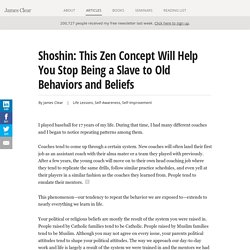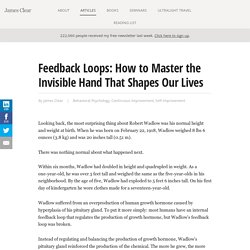

The Evolution of Anxiety: Why We Worry. Let’s pretend for a moment that you are a giraffe.

You live on the grasslands of the African savannah. You have a neck that is 7 feet long (2.1 meters). Every now and then, you spot a group of humans driving around on a safari taking pictures of you. But it’s not just your neck and their cameras that separates you from the humans. Perhaps the biggest difference between you and your giraffe friends and the humans taking your picture is that nearly every decision you make provides an immediate benefit to your life. When you are hungry, you walk over and munch on a tree.When a storm rolls across the plains, you take shelter under the brush.When you spot a lion stalking you and your friends, you run away.
On any given day, most of your choices as a giraffe—like what to eat or where to sleep or when to avoid a predator—make an immediate impact on your life. 7 Times When You Should Just Say Thank You, But Don't. Shoshin: This Zen Concept Will Help You Stop Being a Slave to Old Behaviors and Beliefs. I played baseball for 17 years of my life.

During that time, I had many different coaches and I began to notice repeating patterns among them. Coaches tend to come up through a certain system. New coaches will often land their first job as an assistant coach with their alma mater or a team they played with previously. After a few years, the young coach will move on to their own head coaching job where they tend to replicate the same drills, follow similar practice schedules, and even yell at their players in a similar fashion as the coaches they learned from. Debunking the Eureka Moment: Creative Thinking Is a Process. In 1666, one of the most influential scientists in history was strolling through a garden when he was struck with a flash of creative brilliance that would change the world.

While standing under the shade of an apple tree, Sir Isaac Newton saw an apple fall to the ground. “Why should that apple always descend perpendicularly to the ground,” Newton wondered. “Why should it not go sideways, or upwards, but constantly to the earth’s center? Assuredly, the reason is, that the earth draws it. There must be a drawing power in matter.” The Chemistry of Building Better Habits. There is a concept in chemistry known as activation energy.

Here’s how it works: Activation energy is the minimum amount of energy that must be available for a chemical reaction to occur. Let’s say you are holding a match and that you gently touch it to the striking strip on the side of the match box. Nothing will happen because the energy needed to activate a chemical reaction and spark a fire is not present. However, if you strike the match against the strip with some force, then you create the friction and heat required to light the match on fire. Two Harvard Professors Reveal One Reason Our Brains Love to Procrastinate. Sometime around 2006, two Harvard professors began to study why we procrastinate.

Why do we avoid doing the things we know we should do, even when it’s clear that they are good for us? To answer this question, the two professors — Todd Rogers and Max Bazerman — conducted a study where participants were asked whether they would agree to enroll in a savings plan that automatically placed two percent of their paycheck in a savings account. Nearly every participant agreed that saving money was a good idea, but their behavior said otherwise: One version of the question asked participants to enroll in the savings plan as soon as possible. In this scenario, only 30 percent of people said they would agree to enroll in the plan.In another version of the question, participants were asked to enroll in a savings plan in the distant future (like a year from today). The Impact Bias: How to be Happy When Everything Goes Wrong. In the summer of 2010, Rachelle Friedman was preparing for one of the best periods of her life.

She was recently engaged, surrounded by her best friends, and enjoying her bachelorette party. Friedman and her friends were spending the day at the pool when one of them playfully pushed her into the shallow end of the water. Friedman floated slowly to the top of the pool until her face emerged. It was immediately obvious that something was wrong. “This isn’t a joke,” she said. Her head had struck the bottom of the pool and shattered two vertebrae. “We are just so happy…” One year later, Rachelle Friedman became Rachelle Chapman as she married her new husband. Feedback Loops: How to Master the Invisible Hand That Shapes Our Lives. Looking back, the most surprising thing about Robert Wadlow was his normal height and weight at birth.

When he was born on February 22, 1918, Wadlow weighed 8 lbs 6 ounces (3.8 kg) and was 20 inches tall (0.51 m). There was nothing normal about what happened next. Within six months, Wadlow had doubled in height and quadrupled in weight. As a one-year-old, he was over 3 feet tall and weighed the same as the five-year-olds in his neighborhood. By the age of five, Wadlow had exploded to 5 feet 6 inches tall. Wadlow suffered from an overproduction of human growth hormone caused by hyperplasia of his pituitary gland. Instead of regulating and balancing the production of growth hormone, Wadlow’s pituitary gland reinforced the production of the chemical. By the age of 12, Wadlow was over 7 feet tall (2.18 m) and weighed nearly 300 pounds (130 kg). Sadly, but not unexpectedly, the rest of his body could not keep pace.